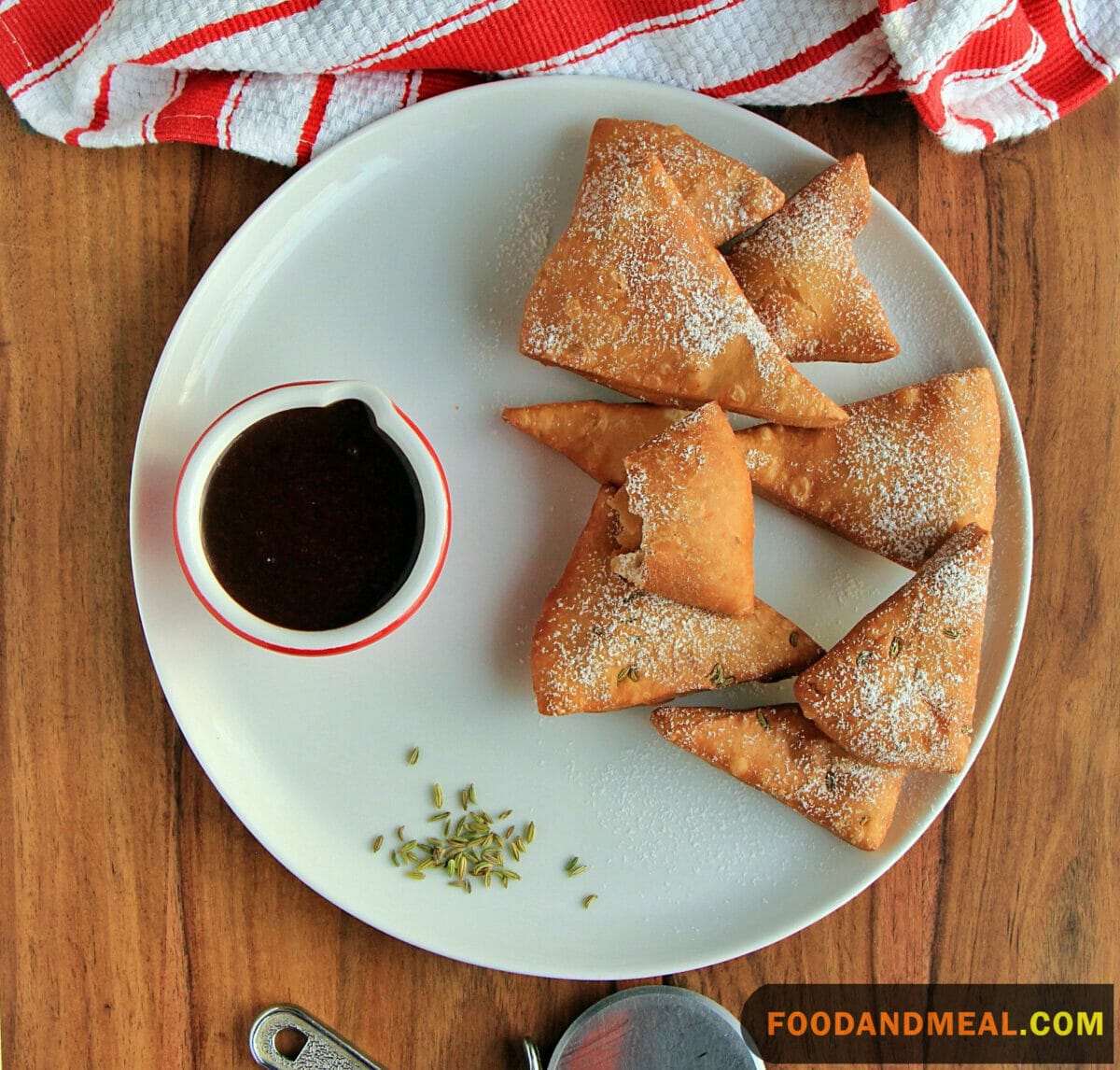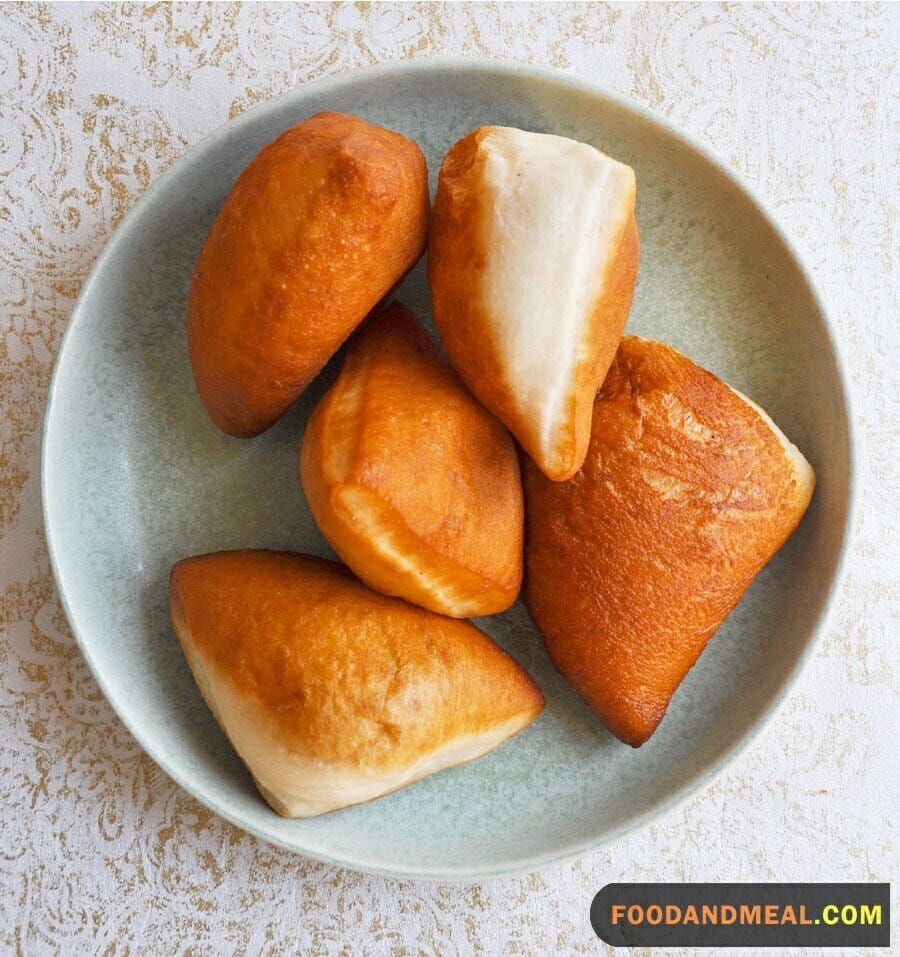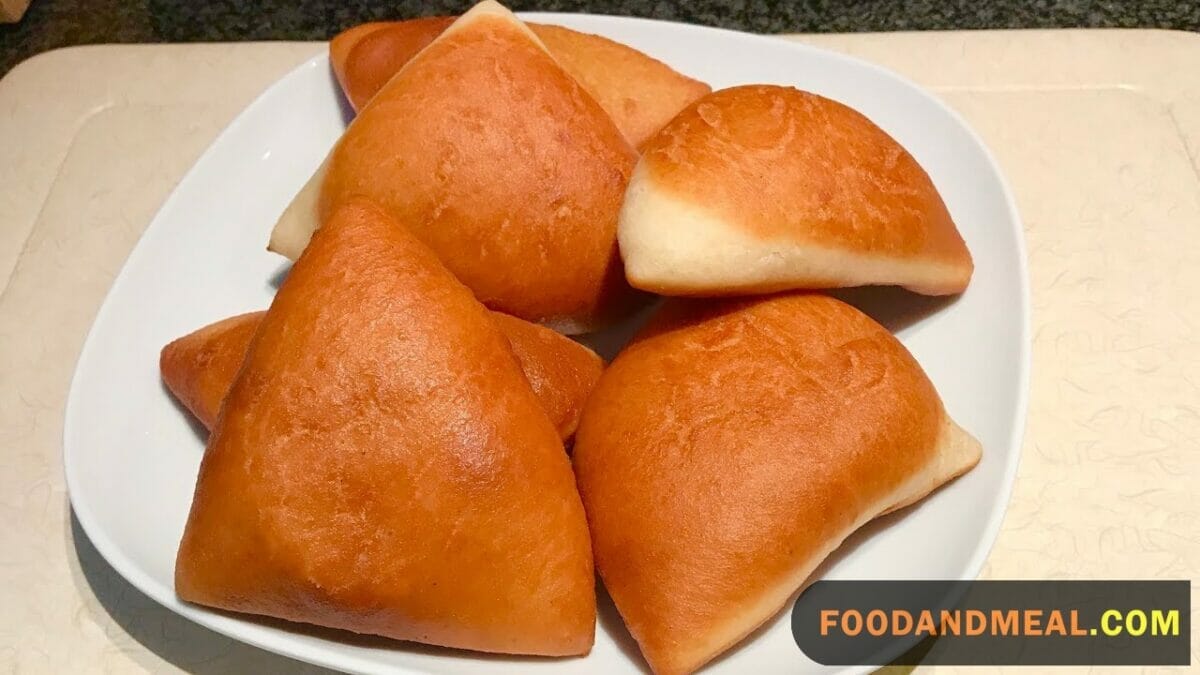Welcome to a culinary journey to the coastal regions of Kenya, where the air is filled with the tantalizing aroma of Kenyan Mahamri. These delectable, slightly sweet, and spiced pastries are a beloved delicacy, often enjoyed with a cup of chai. Today, I’m excited to share my authentic Kenyan Mahamri recipe with you. Get ready to recreate a taste of coastal Kenya in your kitchen.
Kenyan Mahamri Recipe


Kenyan Mahamri
Equipment
Ingredients
- All-purpose flour or baking powder
- Instant dry yeast
- Granulated sugar
- Spices cardamom, ginger, cinnamon or allspice
- Milk coconut or cow
- Vegetable oil
Instructions
Step 1:
- Using a large spoon, mix the flour and yeast (or baking powder) into a big mixing bowl. The ratio of flour to the yeast should be 3 cups is to 1 tsp. This is enough to make at least 16 mahamri.
Step 2:
- Put a handful of sugar or in the amount you want your Mahamri to be sweetened. Put a dash of ground cardamom, cinnamon, allspice or ginger (or a mixture of all of these spices).
Step 3:
- Pour in the coconut milk or cow milk (it can also be a mixture of both) and knead the dough with your both hands. Add milk from time to time until you achieved a soft, firm—but not sticky—dough.
Step 4:
- Continue to knead the dough for the next 15-20 minutes till you can feel that it has gone smooth and elastic. Put the dough into a ball form, and then lightly grease it and your mixing bowl. Put a clean towel over the bowl and put in a warm place. This will allow the dough to rise within three hours or at least until it doubles its size.
Step 5:
- Squeeze the dough down and start dividing it into four balls with equal size. Get your rolling pin and run it through, one ball at a time. Each formed disc should be at least 7 inches in diameter. Using a knife, carve the disk into four quarters. Place each triangle side by side on a floured surface. Again, place a clean towel over the pieces of dough and let it rise for the second time which can take from 15 minutes to 1 whole hour.
Step 6:
- After the allotted time, heat your pan or wok into a 350⁰F heat and pour in about 2-3 inches deep of canola (or vegetable oil) for deep frying. Fry at least 4 mahamris at a time and with the use of a suitable spoon; gently cast the oil over them from time to time.
Step 7:
- Using the tongs, turn over the dough pieces by the time they begin to puff. Ensure to cook the mahamris in all sides to attain that golden brown coloring evenly.
Step 8:
- Place the already cooked mahamris on paper towels for the towels to absorb the extra oil.
Step 9:
- Allow the mahamris to cool down a bit and serve with chai tea.
Step 10:
- Set aside the remaining mahamris in a sealed bag.
Video
Notes
Nutrition
© Food And Meal
This website provides approximate nutrition information for convenience and as a courtesy only. Nutrition data is gathered primarily from the Spoonacular Database, whenever available, or otherwise other online calculators.
Alternative Method: Baking Mahamri in an Oven

Ingredients:
- 3 cups of all-purpose flour
- 1/2 cup of sugar
- 1 teaspoon of cardamom powder
- 1/2 teaspoon of active dry yeast
- 1 cup of coconut milk
- A pinch of salt
- 1/4 cup of melted butter or vegetable oil
- Additional oil for brushing
Instructions:
- Activate the Yeast: In a small bowl, warm the coconut milk slightly (make sure it’s not too hot). Add the yeast and a teaspoon of sugar. Let it sit for about 5-10 minutes until it becomes frothy.
- Mix the Dry Ingredients: In a large mixing bowl, combine the all-purpose flour, remaining sugar, cardamom powder, and a pinch of salt.
- Create the Dough: Make a well in the center of the dry ingredients and pour in the yeast mixture and melted butter or oil. Mix everything until you have a soft, elastic dough.
- Knead the Dough: Turn the dough onto a floured surface and knead it for about 10 minutes until it’s smooth and no longer sticky.
- Rise and Preheat: Place the dough back into the mixing bowl and cover it with a damp cloth. Allow it to rise for 2-3 hours or until it has doubled in size. While the dough is rising, preheat your oven to 350°F (180°C) and place a tray of water on the bottom rack to create steam.
- Shape the Mahamri: After the dough has risen, punch it down to remove excess air. Divide it into equal portions and shape each into a round or triangular Mahamri. Place them on a parchment-lined baking sheet.
- Second Rise: Cover the shaped Mahamri with a clean cloth and let them rise for an additional 30-45 minutes.
- Bake: Before baking, brush the Mahamri with a little oil to give them a golden finish. Bake them in the preheated oven for about 20-25 minutes or until they’re golden brown and have a hollow sound when tapped on the bottom.
- Serve: Once baked, allow the Mahamri to cool slightly, and then enjoy the delightful, oven-baked Mahamri with a cup of Kenyan chai.
Tips for making Kenyan Mahamri

Cooking Tips
- Proper Kneading: Knead the dough thoroughly until it’s smooth and elastic. This step is essential for creating soft and fluffy Mahamri.
- Yeast Activation: Make sure your yeast activates properly. The milk should be warm but not too hot; otherwise, it can kill the yeast.
- All About Timing: Allow the dough to rise for the recommended time. Over-rising can lead to Mahamri that are too airy, while under-rising results in a dense texture.
- Oil Temperature: Maintain a consistent oil temperature. If the oil is too hot, the Mahamri may brown too quickly on the outside and remain uncooked inside.
- Flipping Technique: When frying, ensure you flip the Mahamri gently, so they cook evenly on both sides.
Serving Suggestions
- Chai and Mahamri: This classic Kenyan combination involves dipping Mahamri into a hot cup of spiced tea (Chai). The sweet Mahamri perfectly balances the strong flavors of the Chai.
- Fresh Fruits: Serve Mahamri with a side of fresh tropical fruits like mangoes, pineapples, or passion fruit to add a refreshing contrast.
- Coconut Chutney: Prepare a coconut chutney or dip for a delightful accompaniment. The creamy, slightly tangy flavor complements the sweetness of the Mahamri.
- Breakfast Spread: Include Mahamri as part of a breakfast spread alongside eggs, sausages, and other morning favorites.
- Sweet Dips: Create a dipping sauce with honey, maple syrup, or jam to add an extra layer of sweetness.
Frequently Asked Questions about Kenyan Mahamri

- Can I Store Leftover Mahamri? How? Yes, you can store leftover Mahamri. Allow them to cool completely, then place them in an airtight container. They will remain fresh for up to 2-3 days. You can also freeze them for longer storage.
- Can I Use Instant Yeast Instead of Active Dry Yeast? Yes, you can substitute instant yeast for active dry yeast. Use the same quantity, but you can add it directly to the dry ingredients without proofing.
- What’s the Best Oil for Frying Mahamri? Vegetable oil is a common choice for frying Mahamri. You can also use other neutral-flavored oils like canola or sunflower oil.
- My Mahamri Turned Out Too Dense. What Went Wrong?Under-kneading the dough, insufficient rising time, or incorrect oil temperature during frying can lead to denser Mahamri. Pay close attention to these factors.
- Can I Make Savory Mahamri? Absolutely! While the recipe provided is for sweet Mahamri, you can make savory versions by reducing the sugar and adding spices like cumin or black pepper to the dough.
Discover the magic of Kenyan Mahamri with our authentic recipe. Satisfy your cravings with sweet, fluffy pastries. A taste of Kenya in your own kitchen.
Experience the culinary brilliance of Chef John at Food And Meal Restaurant. With over 20 years of global expertise, My innovative creations and unwavering dedication to cooking have earned me a well-deserved reputation. My passion for gastronomy is showcased in every dish, combining fresh, local ingredients with harmonious flavors and captivating presentations. My ability to tell a story through my food reflects my profound understanding of culture and emotion.








